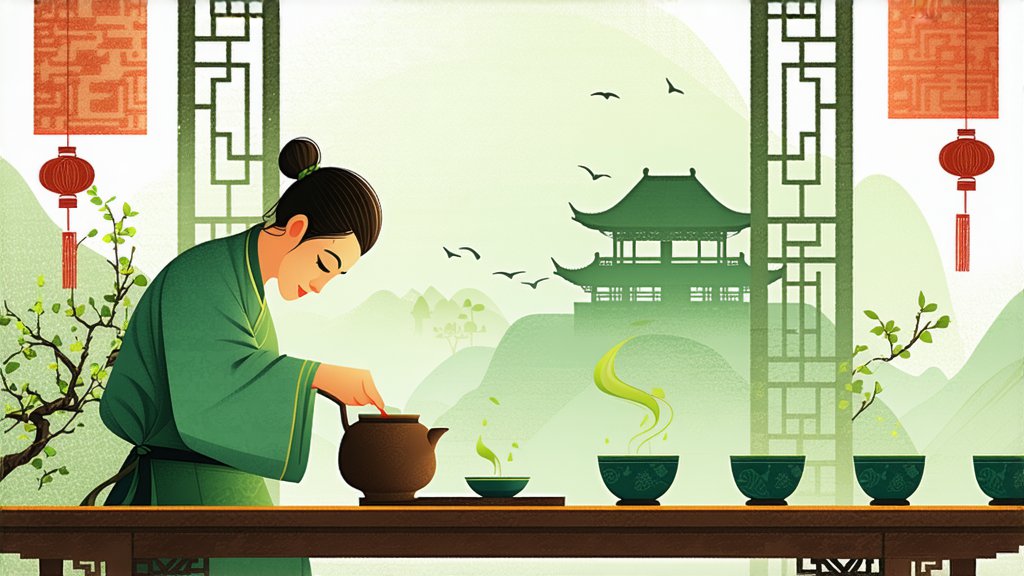
Tieguanyin, also known as Iron Goddess of Mercy, is a revered variety of Oolong tea that hails from the Fujian province of China. This tea is celebrated for its unique aroma, taste, and the cultural significance it carries within the rich tapestry of Chinese tea culture. In this article, we will delve into the history, varieties, production techniques, and the art of appreciating Tieguanyin Oolong tea.
History of Tieguanyin Oolong Tea
The origins of Tieguanyin are steeped in legend, with the most popular tale dating back to the Qing Dynasty. It is said that a poor farmer named Wei, while clearing the wild underbrush on a mountain, discovered a tea plant unlike any he had seen before. He carefully transplanted the plant to his garden and nurtured it. The tea produced from this plant was so exceptional that it quickly gained fame, and the farmer attributed his good fortune to the goddess of mercy, Guanyin, hence the name Tieguanyin.
Varieties of Tieguanyin Oolong Tea
Tieguanyin is not a single type of tea but rather a category that encompasses various sub-varieties. The most common are:
-
Ming Cong Tieguanyin: This is the premium grade of Tieguanyin, known for its exquisite aroma and flavor. It is picked from the first flush of spring and is highly sought after by connoisseurs.
-
Spring Tieguanyin: Picked during the spring season, this variety is known for its fresh and floral notes.
-
Autumn Tieguanyin: Harvested in the autumn, this tea has a more robust flavor profile with deeper, earthy tones.
-
Winter Tieguanyin: The least common due to the harsh weather conditions, winter Tieguanyin is prized for its rarity and unique taste.
Crafting the Perfect Tieguanyin Oolong Tea
The production of Tieguanyin is a meticulous process that involves several key steps:
-
Picking: The leaves are handpicked, usually in the early morning to ensure they are fresh and full of dew. The picking is selective, focusing on the tenderest leaves and buds.
-
Withering: The freshly picked leaves are spread out to wither under the sun or in a well-ventilated area to reduce their moisture content.
-
Shaking and Bruising: This step is unique to Tieguanyin and involves gently shaking the leaves to bruise them slightly, which aids in the oxidation process.
-
Oxidation: Unlike black or green tea, Tieguanyin undergoes a partial oxidation process, which is controlled to achieve the desired flavor profile.
-
Killing Green: This step halts the oxidation process by heating the leaves, which also helps to fix the tea's color and aroma.
-
Rolling: The leaves are rolled to further shape them and to enhance their flavor.
-
Drying: The final step involves drying the leaves to reduce the moisture content to a safe level for storage.
Appreciating Tieguanyin Oolong Tea
To truly appreciate Tieguanyin, one must engage all senses:
-
Aroma: The aroma of Tieguanyin is complex, ranging from floral and fruity to creamy and nutty. It is best appreciated by warming the empty cup before infusing the tea, allowing the residual heat to release the tea's natural fragrance.
-
Appearance: The leaves should be examined before and after infusion. High-quality Tieguanyin leaves are often twisted and tightly rolled, and they unfurl beautifully when steeped.
-
Taste: The taste of Tieguanyin is a balance of sweetness, astringency, and complexity. It should be savored slowly, allowing each sip to coat the mouth and reveal its depth.
-
Aftertaste: A good Tieguanyin leaves a lingering, pleasant aftertaste that can last for minutes after the tea is swallowed.
-
Brewing: The brewing of Tieguanyin is an art in itself. The water temperature should be around 95°C (203°F), and the steeping time varies from 1 to 3 minutes, depending on the desired strength.
Conclusion
Tieguanyin Oolong tea is more than just a beverage; it is a cultural treasure that embodies the essence of Chinese tea tradition. Its history